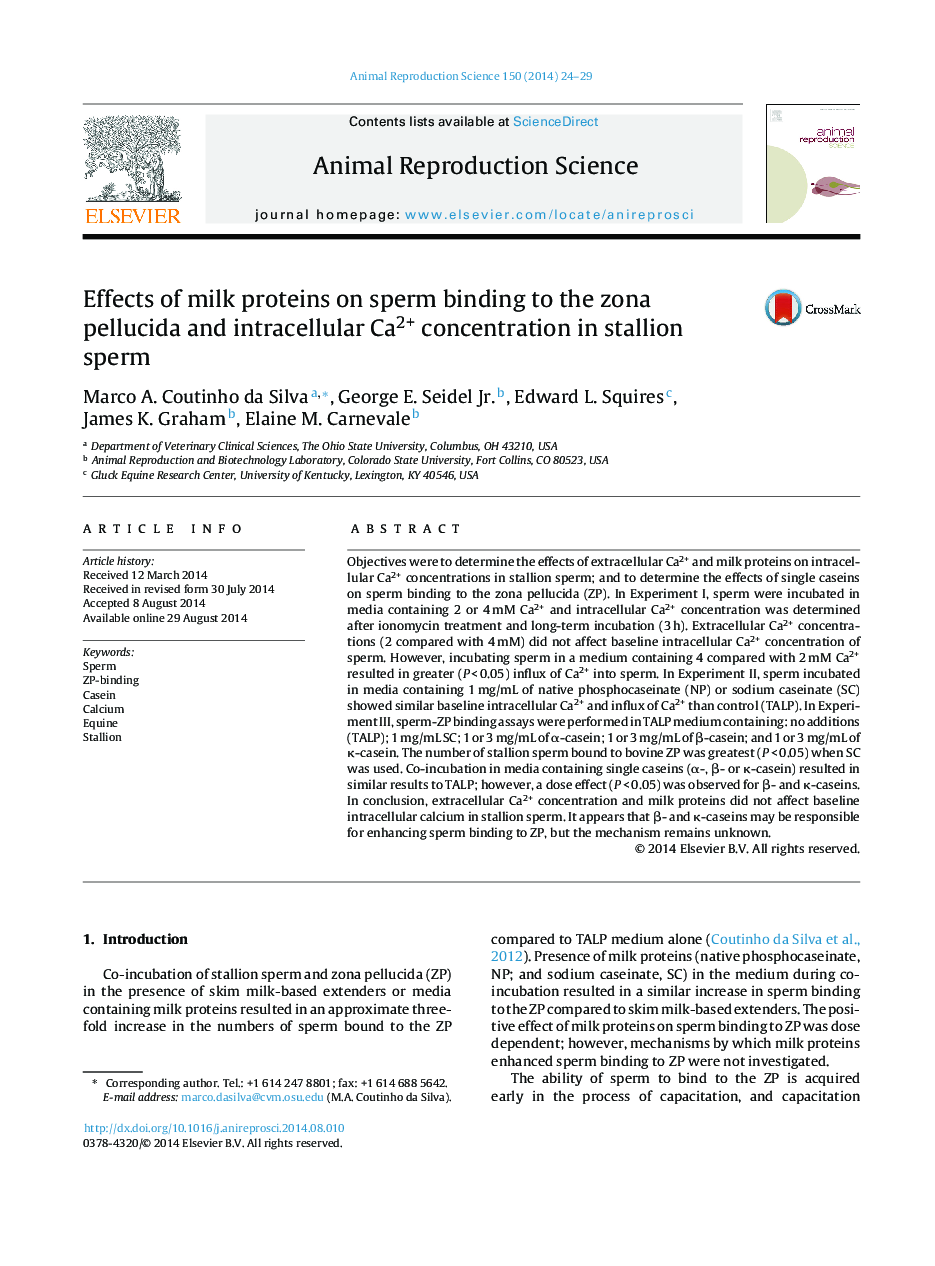| Article ID | Journal | Published Year | Pages | File Type |
|---|---|---|---|---|
| 2072825 | Animal Reproduction Science | 2014 | 6 Pages |
Objectives were to determine the effects of extracellular Ca2+ and milk proteins on intracellular Ca2+ concentrations in stallion sperm; and to determine the effects of single caseins on sperm binding to the zona pellucida (ZP). In Experiment I, sperm were incubated in media containing 2 or 4 mM Ca2+ and intracellular Ca2+ concentration was determined after ionomycin treatment and long-term incubation (3 h). Extracellular Ca2+ concentrations (2 compared with 4 mM) did not affect baseline intracellular Ca2+ concentration of sperm. However, incubating sperm in a medium containing 4 compared with 2 mM Ca2+ resulted in greater (P < 0.05) influx of Ca2+ into sperm. In Experiment II, sperm incubated in media containing 1 mg/mL of native phosphocaseinate (NP) or sodium caseinate (SC) showed similar baseline intracellular Ca2+ and influx of Ca2+ than control (TALP). In Experiment III, sperm-ZP binding assays were performed in TALP medium containing: no additions (TALP); 1 mg/mL SC; 1 or 3 mg/mL of α-casein; 1 or 3 mg/mL of β-casein; and 1 or 3 mg/mL of κ-casein. The number of stallion sperm bound to bovine ZP was greatest (P < 0.05) when SC was used. Co-incubation in media containing single caseins (α-, β- or κ-casein) resulted in similar results to TALP; however, a dose effect (P < 0.05) was observed for β- and κ-caseins. In conclusion, extracellular Ca2+ concentration and milk proteins did not affect baseline intracellular calcium in stallion sperm. It appears that β- and κ-caseins may be responsible for enhancing sperm binding to ZP, but the mechanism remains unknown.
